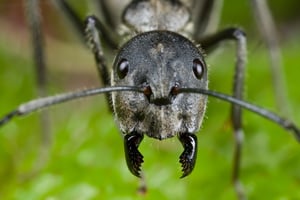Robots, including even the most sophisticated ones, have never managed to be ultra-rapid, and have never even come close to reaching the “snap action” of the fastest living beings, which – as it is well-known – are also the smallest. Examples of these are several types of shrimps, which with their buccal organs (the equivalent of the mouth in the most advanced organisms) can reach speeds of approximately 110 kilometers per hour, or certain species of ants, whose jaws can move at 210 kilometers per hour, in less than a millisecond, in order to capture their prey. But also hydras (tiny marine organisms) can be ultrafast, when they “trigger” their microscopic capsules of poison: the acceleration is 100 times faster than a bullet. Now, however, a mathematical study published in the journal Science is starting to shed light on the secrets of the exceptional speed of these little animals and, hence, is providing valuable information also for the creation of robots that can move faster.
To lead the study is a team from Duke University in Durham (USA). Researchers have discovered, for example, that in order to create super-speed, muscles are not as important as the tissue that is spring-loaded, ready to be released like an archer’s bow: in particular, flexible tendons, high-performing cuticles and elastic structures work together like true and proper biological slingshots.
The comparison with human abilities is scathing: if humans had the characteristics of several types of insects, for example, they could jump nearly two football fields with a single leap. Many crucial details still need to be clarified, because current mathematical models are not capable of describing the elastic movements, both individually and as a whole. But the data on 104 species of super-fast plants and animals, collected to date, can also contribute to the drawing up of a model for faster miniaturized robots.

